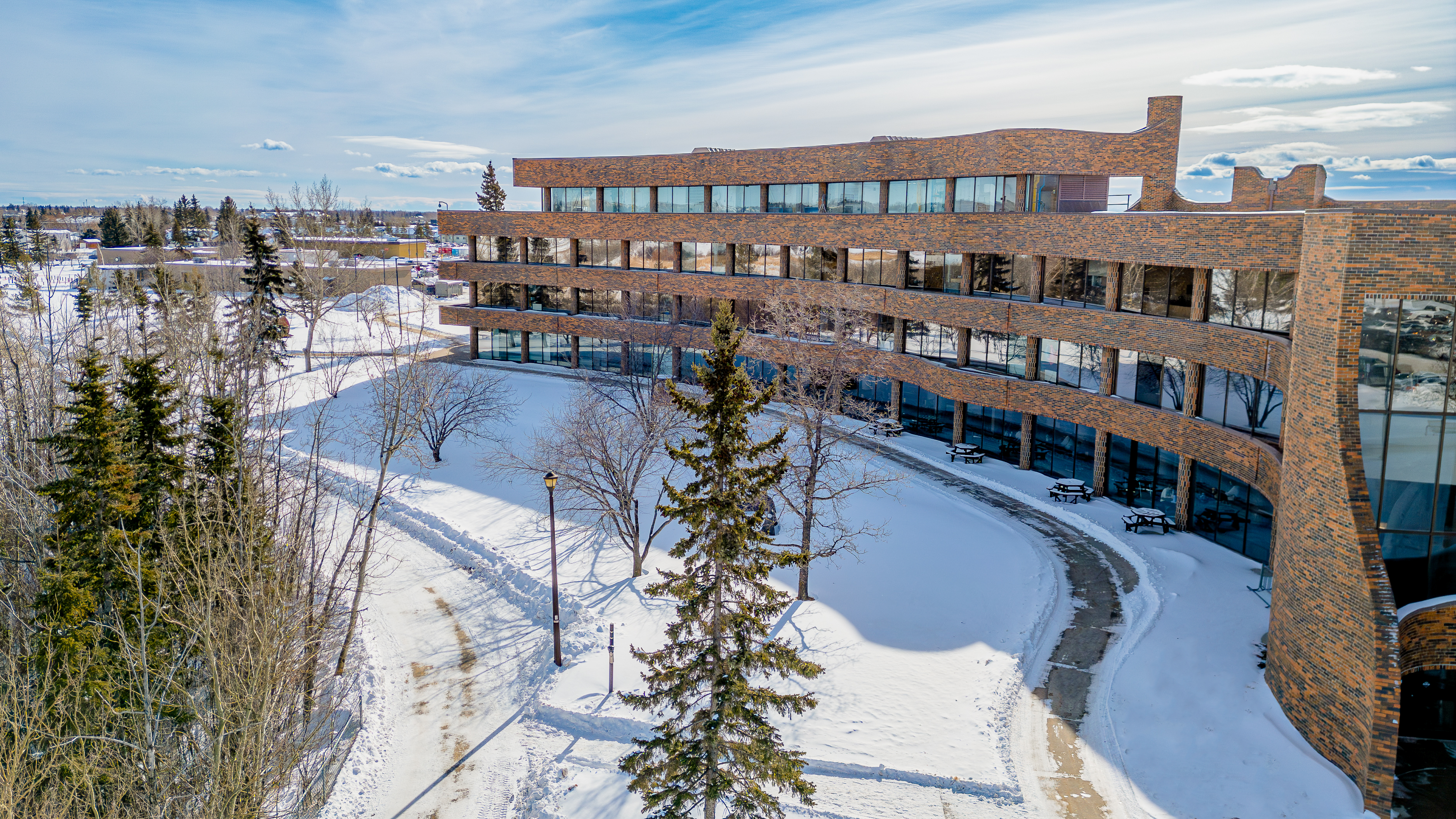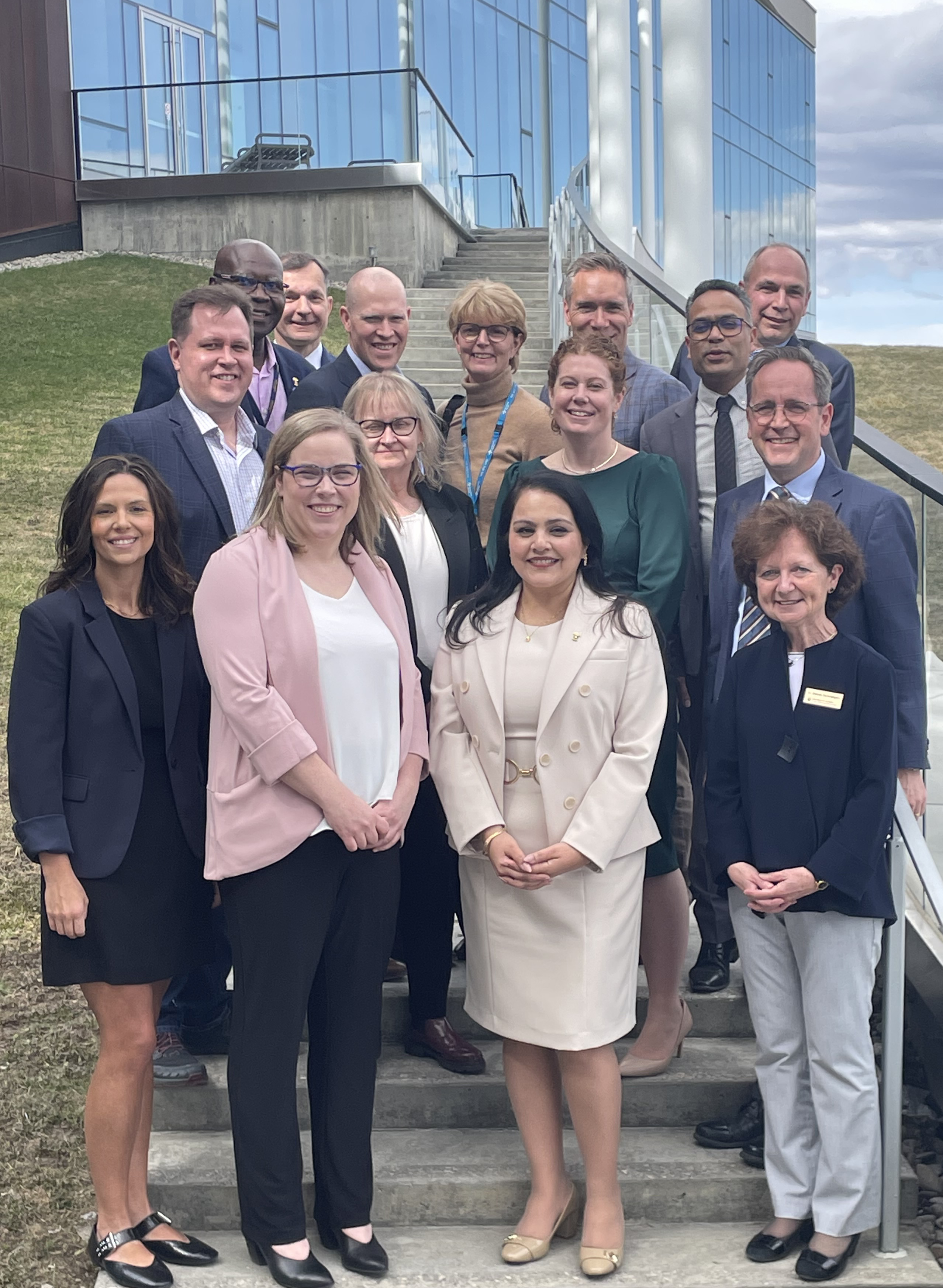U of A Rural Medical Education Program Training Centre to open in Grande Prairie
Shirley Wilfong-Pritchard - 10 April 2024

Grande Prairie campus of Northwestern Polytechnic. Photo: William Vavrek Photography
To combat the growing shortage of primary-care physicians in rural and remote areas of the province, on April 3 the Government of Alberta pledged $224.8 million to support a variety of activities for two Rural Medical Education Program Training Centres — one in Grande Prairie and one in Lethbridge.
The new centres aim to increase access to medical education for rural and Indigenous learners and fully prepare graduates for family medicine and general practice positions in rural, regional and Indigenous communities across the province.
The University of Alberta is partnering with Northwestern Polytechnic in Grande Prairie and the University of Calgary’s Cumming School of Medicine is teaming up with the University of Lethbridge.
Northwestern Polytechnic, previously known as Grande Prairie Regional College, is a publicly funded educational institution that offers degree, university transfer, diploma and certificate programs, apprenticeship and trades training, and soon medical program training.
The provincial funding will support infrastructure, a teaching clinic, and faculty and clinical partnerships to eventually train 30 medical students in northern Alberta each year. Funding will also support an increase in residency training positions, with a focus on family medicine and other generalist specialists, as well as international medical graduate residents. The first cohort of medical students is expected to start in the fall of 2025. Similar funding was announced to train doctors in southern Alberta.

“These Rural Medical Education Program Training Centres are a direct investment in the health of Albertans,” says Brenda Hemmelgarn, dean of the Faculty of Medicine & Dentistry, and dean and vice-provost of the U of A’s College of Health Sciences. “We will work with communities across Alberta for clinical placements as part of this program, including Fort McMurray, Red Deer and Peace River, to name but a few. Importantly these rural training centres can extend to include nurses, nurse practitioners, pharmacists, physiotherapists and other health-care professions in an interdisciplinary training environment.”
Background
The Faculty of Medicine & Dentistry has been working purposely toward alleviating the rural doctor shortage over the past several years. To help achieve its vision of a healthy Alberta, the faculty established the Office of Rural & Regional Health in 2006 to support the development of new health-care programs for rural and regional Alberta.
By 2007, the U of A was one of the first medical schools in Canada to set up a Rural Integrated Community Clerkship program. Up to 25 third-year medical students are placed in rural Alberta communities for 10 months, using regional family-medicine practices as their core experience and receiving support from rural preceptors and teaching physicians.
A 2023 study looked at U of A medical graduates from 2009 to 2016 and found that participating in a rural clerkship was a more reliable predictor of becoming a rural practitioner than having a rural background. Jill Konkin, principal investigator of the study and U of A professor of family medicine, stated that the biggest advantage the rural clerkship students had was the relationships they developed with their teachers, patients and community.
A team-based approach
The centres’ innovative approach of combining medical education and health-care delivery in locally integrated, team-based teaching clinics is an opportunity for Alberta to be a nationwide example of providing modern interprofessional medical education that serves the needs of patients outside urban centres.
Shirley Schipper, professor in the Department of Family Medicine, and vice-dean of education for the Faculty of Medicine & Dentistry has worked in an academic team-based teaching clinic for the last two decades. “Team-based care in a supportive learning and working environment is good for doctors, other health professionals, learners and patients. There are many examples of excellent Patient’s Medical Home models of care — where the goal is to have the patient’s family physician work collaboratively with a team of health professionals, which may include nurses, pharmacists, nutritionists and others as required — in rural and regional settings in Alberta, some with the help of Primary Care Networks, and new graduates are drawn to these. Having a regional training centre as a teaching hub in Grande Prairie is a key component for a successful integrated medical campus.”
Darryl Rolfson, professor in the Department of Medicine and associate dean of the MD program, points out that the distributed-campus approach is a well-tested model of medical education in Canada and elsewhere. “A close comparison of our intended model can be made with the Northern Medical Program in Prince George, British Columbia, established 20 years ago,” he says. “Our program builds on this model by planning for rotation-based clerkship experiences in Grande Prairie, coupled with its own distinctive and established model of rural integrated community clerkships in other northern communities.”
“We also build on a highly successful model provided earlier in training — the Pre-Clinical Networked Medical Education program,” says Rolfson, where second-year undergraduate medical students receive their first experience of clinical teaching — four weeks of their GI block and four weeks of their reproduction block – in a rural community. “Both PNME and Rural ICC facilitate team-based working relationships,” he adds.
Innovative health-care delivery around the College of Health Sciences
Faculties in the U of A College of Health Sciences offer several innovative programs that provide health-care services to people living in rural and remote locations. Below are just a few examples.
In 2023, provincial funding allowed the Faculty of Rehabilitation Medicine to add 44 seats per year for satellite master’s programs in speech-language pathology, occupational therapy and physical therapy at Augustana Campus in Camrose. This initiative makes it more accessible for students wanting to study and work in rural Alberta, where there is a shortage of rehabilitation health-care professionals.
The Northern Institute for Deep Learning in Ultrasound has helped develop portable AI-enhanced ultrasound device technology that is bringing major benefits to rural and remote communities. It can be used as a tool for early detection of developmental dysplasia of the hips in infants or to diagnose wrist and elbow fractures. It is also used in cardiac echo ultrasound projects. Two U of A medical students will be presenting and demonstrating the tool at this year’s Rural and Remote Medicine Conference.
The Institute for Stuttering Treatment and Research (ISTAR) offers speech and language services via Zoom for clients living outside Edmonton or Calgary, allowing people in rural and remote communities access to specialized treatment.
A project from the Rehab Robotics Lab developed Tele-Rehab 2.0, which helps patients in rural communities heal from home. It focuses on shoulder pain, hip and knee replacements, vertigo and balance, and wheelchair-seating services. The program uses wearable sensors, cameras and custom motion-capture software to collect patient data, which can then be sent to specialists in urban centres to provide accurate assessments. Patients are then given at-home exercises and individualized training programs.
Through new partnerships, innovative programming and cutting-edge research, the U of A continues to improve health equity by reducing barriers and increasing access to quality health care for all Albertans.